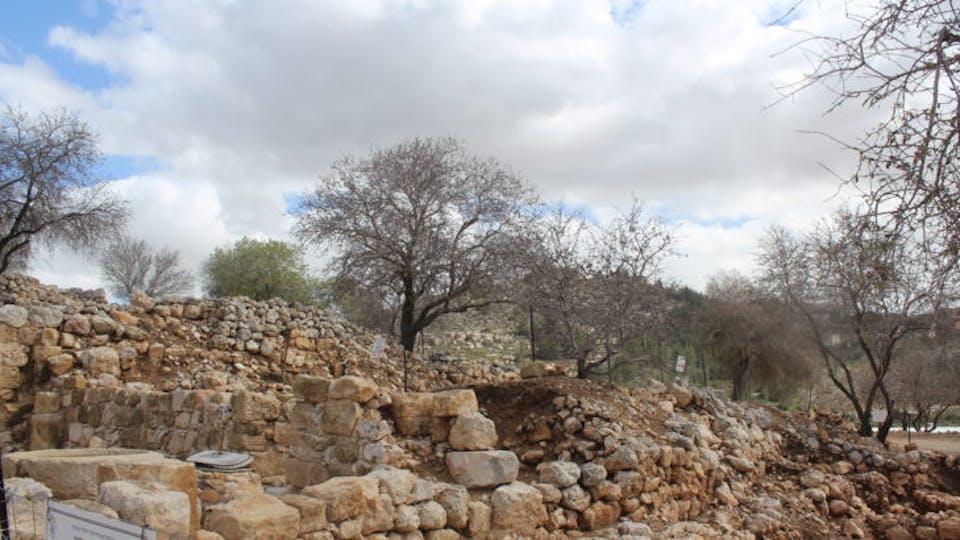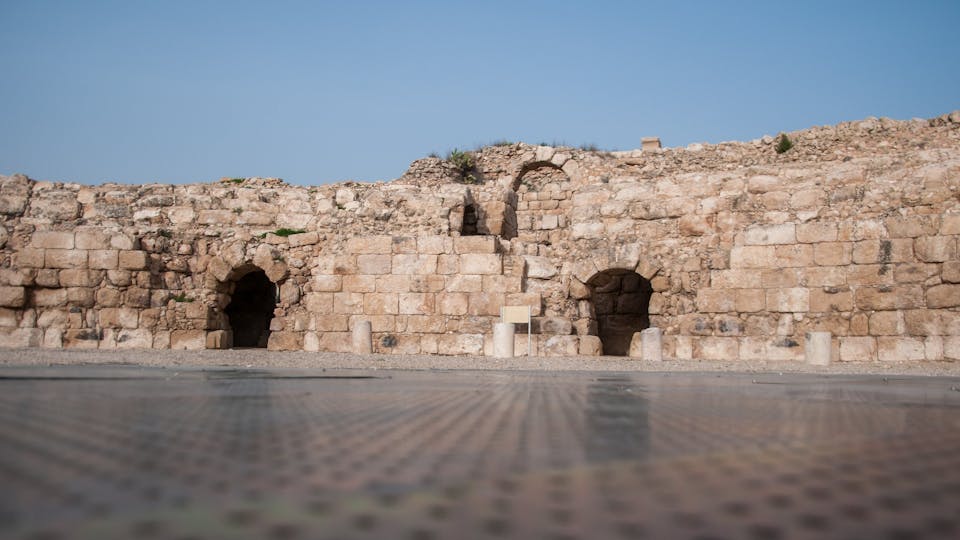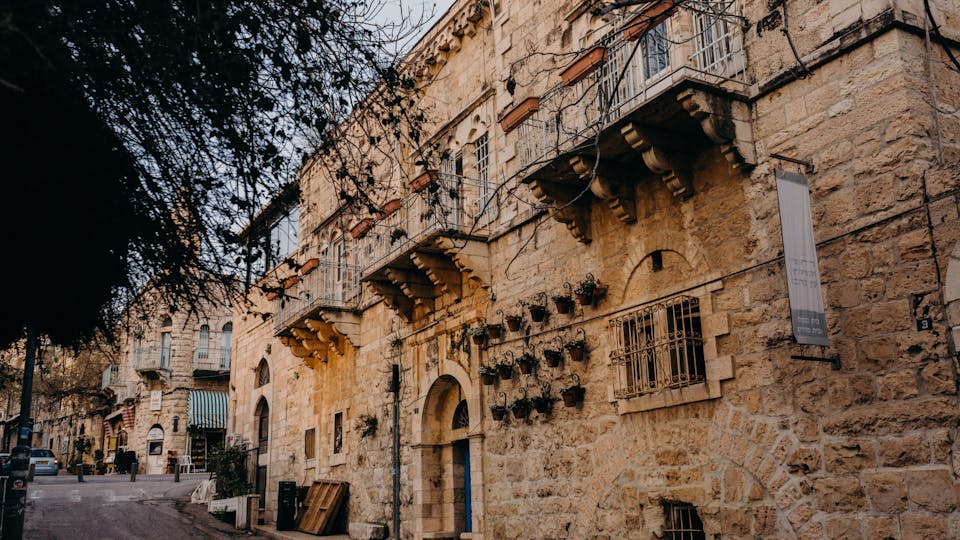You’ve booked countless church-hopping tours in Jerusalem, beach bumming vacations in Eilat, and holy pilgrimages to the Sea of Galilee.
But what would you do with a client who wants to venture off the well-trodden tourist trail in Israel?
While the country is awash with world-famous religious sites, there are a plethora of lesser-known attractions for the intrepid traveler to explore.
Whether your client has already done the bucket list hits or simply wants to veer off the beaten track, it’s worth familiarizing yourself with Israel’s undiscovered locales. And we’ve wrapped the top hidden gems up into a neat little list so you can do just that.
From secluded grottos to hidden catacombs and a brand spanking new national park, here are the best seldom-explored places to visit in Israel.
Get ready to wow your intrepid client by sending them well off the well-trodden path.
The Galilee (Region)
You don’t typically hear “Galilee” and “off-the-beaten-track” in the same sentence—its massive freshwater lake is a magnet for Christian pilgrims from around the world. However, a handful of intriguing little-known spots lie peppered throughout the region, most of which you (or your client) have never heard of.
One fascinating option is the tiny town of Magdala on the western shores of the lake. Although most bus tours drive straight past, it’s worth pulling over to have a peek. The site was a bustling city in ancient times and is believed to be the birthplace of Mary Magdalene. New archaeological discoveries still occur today—diggers uncovered the oldest synagogue in Galilee only a decade ago.
Another seldom-visited biblical site is Chorazin, located near the northern shores. Along with Capernaum and Bethsaida, Chorazin forms part of the Evangelical Triangle, a sacred region where Jesus lived out many of his years. A lack of faith from the locals led Jesus to curse the town, and then a 4th-century earthquake reduced it to rubble. Nonetheless, its crumbling old synagogue is still well worth a look.
In central Galilee, Zippori (or Sepphoris) was the regional capital in the 1st century AD, and the remnants of its ancient architecture still stand proudly on display. Visitors can marvel at the Roman theatre, ritual baths, time-worn churches, and a splendid mosaic dubbed the “Mona Lisa of Galilee.”
The Rosh HaNikra Grottoes
Okay, the Rosh Hanikra Grottoes aren’t exactly undiscovered.
In fact, these stunning chalk cliff sea caverns are so popular the local mayor built a subterranean cable car to whisk tourists to and fro. During National Holidays, the site becomes downright chaotic as long rows of giddy sightseers line up to catch a glimpse of the natural wonder.
But what many folks don’t know is you can skip the crowds by side-stepping the cable car and sussing the site out via kayak instead.
The two-hour tour leaves from a nearby beach and sees adventurers cruise towards the cave, paddling within spitting distance of the Lebanese border. An experienced local guide then leads the group into the turquoise-tinged grottos to admire its stark limestone walls. The trip runs year-round except winter and is suitable for any reasonably fit person aged 10-65.
The Golan Heights (Region)
Few foreign tourists venture into the Golan Heights, a basalt boulder-clad plateau overlooking the Sea of Galilee. The scenery is especially outstanding during spring when the wildflowers bloom.
After fierce deliberation, many archaeologists now believe Bethsaida was built in the Golan Heights, where the upper Jordan River meets the Sea of Galilee. The prominent biblical city sets the scene for two of Jesus’ miracles: healing the blind man and feeding the Multitude. Plus, it was the birthplace of several big-name apostles: Andrew, Peter, and Philip, to name a few. Another historic Golan site is Katzrin village, a charming Byzantine settlement with an authentic Hebraic synagogue.
Elsewhere in Golan, millennia-old ruins and sweeping mountain views define Gamla, a rugged camel-shaped rock dubbed the “Masada of the North.” Some visitors come to admire the majestic Griffon vulture, which has a wingspan stretching a whopping 2.7 meters.
Extreme sports enthusiasts won’t want to miss the Black Canyon for its knuckle-biting rappelling excursions. The volcanic gorge is shaded throughout the day and houses scores of refreshing natural pools, making it a hit for outdoorsy Israelis during the blistering summer months.
Another top Golan spot is Mount Hermon, home to Israel’s only ski resort. It can’t compete with the likes of Whistler, but its peaks receive enough white stuff to keep punters happy during the season, which runs from January to March. Once the snow melts, locals come to hike and bike through the lush hilly terrain.
Samaria (Region)
Wedged between the Sea of Galilee and Judaea, Samaria is a fertile pastoral land chock full of boutique vineyards, organic farms, and ancient archaeological treasures. The phrase “good Samaritan” refers to an old regional sect whose descendants continue to inhabit Mount Gerizim.
For a taste of Samarian vino, the Tura Winery offers a 40-minute vineyard tour that culminates with a sampling session. If your client is more into fresh produce, Givot Olam is a quaint organic farm that sells fresh eggs and dairy goods in a gorgeous mountain setting. The gracious owners lead guests through their goat herds and chicken coops while explaining their age-old agricultural customs.
Within Sebastia National Park lie the ruins of the city of the same name, which was once the capital of the Israelite Kingdom. Its amphitheater, basilica, and temple are among the several ancient wonders worth visiting at the site.
Another worthwhile Samarian attraction is Joshua’s Altar, a mysterious Iron Age artifact in the foothills of Mount Ebal. In 1980, an esteemed University of Haifa archaeologist named Adam Zertal determined the biblical ritual site to be genuine.
Both these destinations require prior approval to visit. Sar-El Tours can help with the logistics.
Off-the-beaten-track adventurers can also visit Shiloh, an ancient Samarian city featured in the Old Testament. Shiloh was the primary settlement for Israelite worship until the construction of Solomon’s Temple in Jerusalem, making it a pillar of Deuteronomistic history. The city was also home to the sacred Tabernacle, a world-renowned portable shrine that housed the Ark of the Covenant.

Migdal Tzedek
Israel has a brand new national park, and its archeological wonders are already proving a hit.
The highlight is the Mirabel fortress, a Crusader-era castle that recently reopened after a decade of painstaking conservation work (the fort was severely damaged in the 19th century, along with numerous other Christian monuments). Mirabel sits on a hilltop to the east of Tel Aviv and peers over the Afek Passage, where trader caravans once rumbled by on the ancient sea route.
In the 17th century, the Rayyān family arrived from Transjordan and took control of the village, constructing a stately two-story manor house that you can visit today. Later, during World War I, the Axis Army and the Egyptian Expeditionary Force fought battles here. The site remained closed for many years until its recent re-opening in March 2021.
Aside from the fortress, the park also hosts a verdant forest with hiking trails that criss-cross its rugged terrain.
Beit Guvrin Caves
Hidden beneath the Judean Lowlands, this gob-smacking subterranean site is one of the most extensive artificial cave networks on earth. Yet relatively few tourists visit the site.
The original chambers were built for defense and storage below the ancient city of Maresha, which flourished during the age of the First Temple. The settlement was eventually leveled, and a new town called Beit Guvrin rose in its place. The Romans later conquered and destroyed Beit Guvrin, leaving little but ruins in its wake. Nonetheless, its extensive underground chambers remain relatively unscathed.
The network consists of some 3,000 rooms dating from various eras: Sidonian, Israelite, and Roman, to name a few. Juduean’s soft chalky earth meant each tunnel and chamber could be chiseled and carved by hand—no mechanized drilling technology was available back then.

Jerusalem (Region)
You’ve booked your client to visit the Church of the Holy Sepulchre and marvel at the Tower of David—but what else can they do in the ancient city?
If they’re keen to escape the ever-present Jerusalem crowds, send them underground. Zedekiah’s Cave is a five-acre limestone quarry that spans five city blocks underneath the Muslim Quarter and Old Jerusalem. The man-made cave is the largest quarry in the entire city and was likely built to store cotton.
For more subterranean exploration, the Western Wall Tunnels allow non-claustrophobic travelers to see a further 300 meters of the world’s most famous wall—only a fraction of the ancient structure actually resides above the ground.
Both underground sites remain cool on sweltering summer days—the perfect place to escape the heat.
Back above ground, Mea Shearim is the oldest Jewish neighborhood in the city outside of the city wall and home to a slew of ultra-orthodox Haredi Jews. A stroll through these cobblestone streets is like a blast from the past, a place where strict adherence to religion, law, and prayer define everyday life. Both men and women dress conservatively, and your client should too.
Outside the city, Ein Karem is an endearing hilltop village with enticing holy sites. The Church of St. John the Baptist is thought to be his birthplace, while Virgin Mary once drank from Mary’s Spring. Galleries, restaurants, and handicrafts stores line the narrow streets for clients who seek some post-sightseeing indulgence.
The Pool of Arches
Another bewildering underground destination is the Pool of Arches, a 1,200-year-old reservoir built to store water for the inhabitants of Ramla. The atmospheric site remains in excellent condition, despite centuries of earthquakes and conflict above ground.
Rather than explore on foot, travelers wander down a steep staircase and hop on a rowboat instead. It takes about 20 minutes to glide through the serene cistern, allowing plenty of time to admire its elegant arches and the 15 enormous stone brick pillars.
The dimly lit underground reservoir gives visitors a glimpse into the engineering prowess of the ancient Israelites—and, again, it’s a top spot to escape the scorching summer heat.

The Negev Desert (Region)
The rocky, rugged Negev Desert stretches over southern Israel, spanning some 60% of its total landmass. Nonetheless, few international visitors come here, aside from those on a beach holiday at the bustling resort town of Eilat. But for clients who aren’t phased by its arid terrain, there are plenty of exciting attractions to explore here (pro tip: avoid sending them in summer).
Oenophiles will adore a cellar door tour through the Negev wine-growing region, where 2,000-year-old vineyards harvest outstanding dry-climate plonk. Nine local wineries welcome tourists to sample (and purchase) their wares, all located in the highlands by the old wine and spice route.
Although seemingly lifeless by day, the Negev comes alive after dark when scores of nocturnal animals scurry about. The best way to view its diverse wildlife is on a nighttime jeep safari, where an eagle-eyed local guide will track down the critters on your behalf. Expect to spot foxes, hyenas, wolves, owls, bats, and ibexes on any given tour. Lucky ducks may even catch a glimpse of the Arabian leopard—a handful of these majestic endangered beasts survive in the Negev.
On the eastern fringe of the desert, Arava is a bio-diverse region with stacks of exciting sites to explore.
Timna Park is the star of the show for its otherworldly assortment of majestic sandstone columns. Great strips of volcanic magma froze into the cliffs to create these fascinating geological oddities, which travelers can view via a network of accessible hiking trails. Don’t forget to recommend Mount Timna, the world’s oldest copper mine.
Another outstanding natural attraction is Makhtesh Ramon, a pristine Negev nature reserve dubbed the “Israeli Grand Canyon.” Hiking, cycling, and horse-riding excursions explore the region by day while star-gazing tours gaze over the sparkling sky come nighttime.
For an exotic twist, have your client stay the night at a traditional Bedouin desert camp. These authentic lodgings boast thermal pools, petting zoos, cultural exhibits, and mouth-watering home-cooked cuisine.


